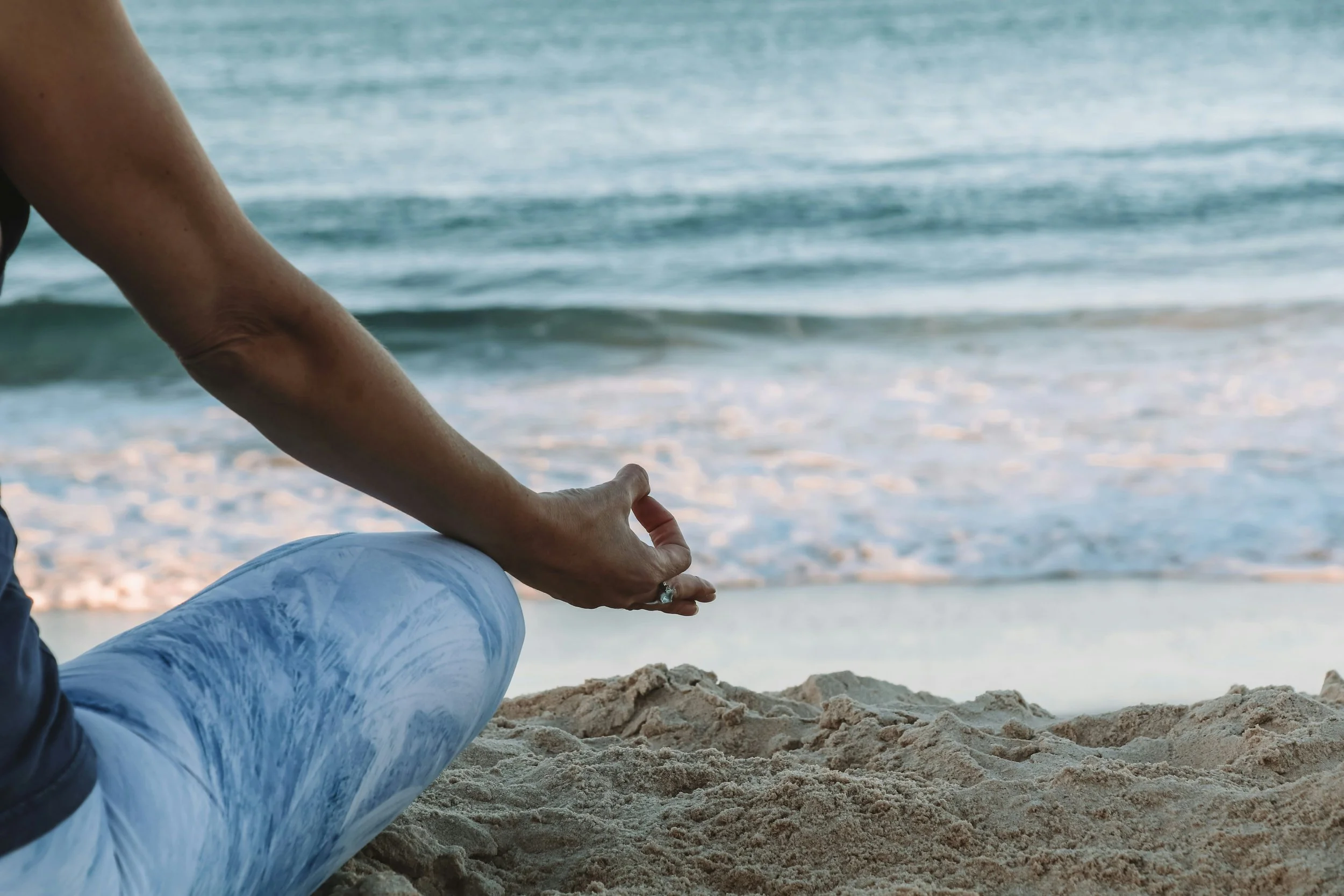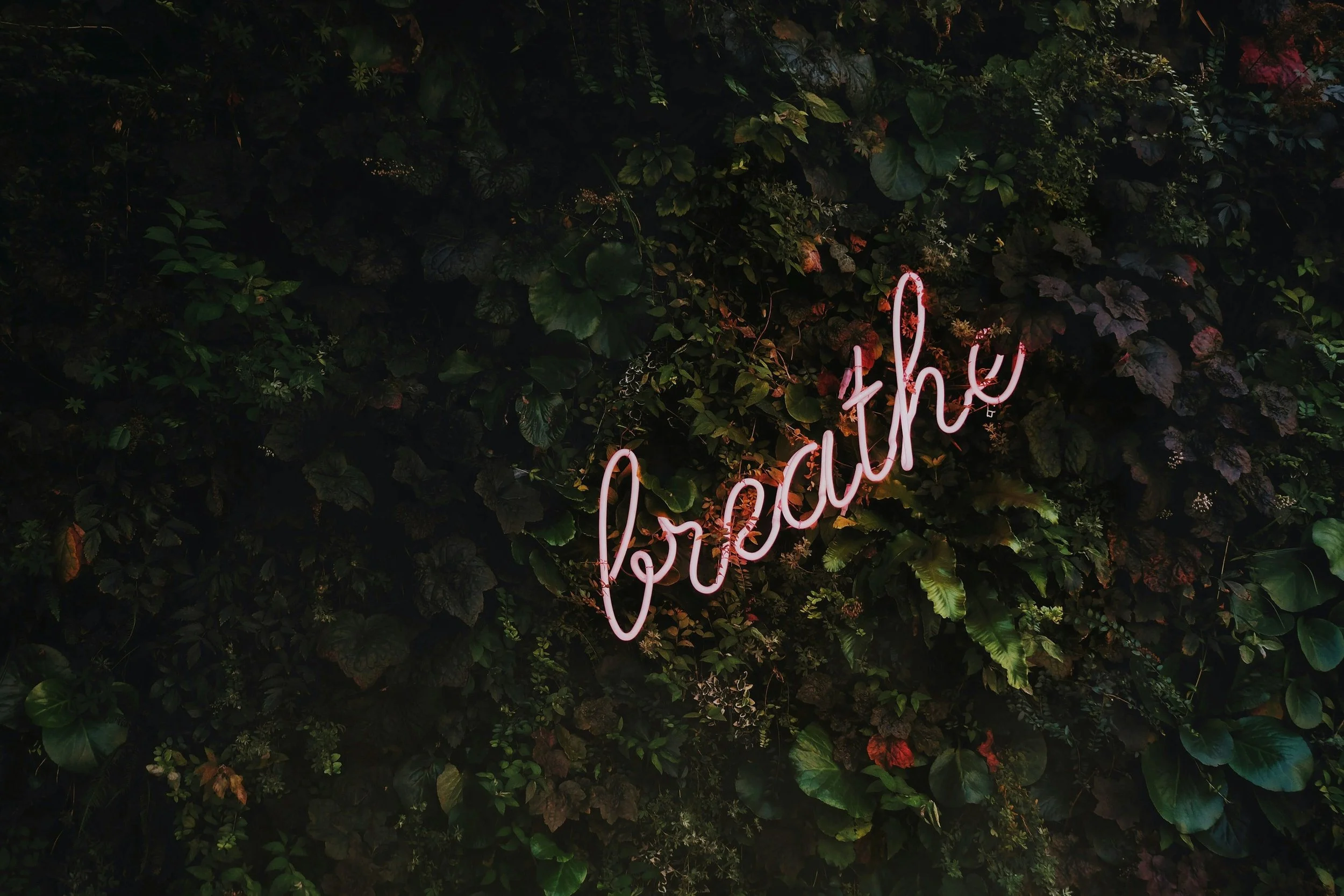Feeling Anxious? 3 Ways Mindfulness Can Help You Find Calm
If you’re like me, you might notice a tendency to spend a lot of time in your head worrying about the future or dwelling on the past (or trying to avoid thoughts about the future or the past). Despite our best intentions, this is the case for many of us as we get caught up in the whirlwind of daily life. This is often especially true when we are feeling anxious.
Enter – mindfulness. Simply put, mindfulness is the practice of bringing our attention fully to the present moment. This involves noticing what’s happening within us and around us without judgment. This can look like paying attention to how your hands feel as you wash them in warm water (rather than getting lost in your thoughts about what’s next on your to-do list – I’m guilty). Or it can look like taking a moment to pause, breathe, and just notice the sensations going on in your body (e.g. tension/looseness, vibration/stillness, warm/cold, etc.).
I have found mindfulness to be an incredibly valuable tool in my therapy practice, so I wanted to share just a few ways that mindfulness can help us in our relationships with anxiety.
Shift unhelpful thought patterns
Rehearsing. Re-rehearsing. Re-re-rehearsing for that conversation with your boss tomorrow.
Replaying that conversation from dinner the other day to try and figure out if you really sounded as dumb as you think you did.
Mentally going through your packing list again because you’re sure you forgot something.
Sound familiar? While you might not be having these exact thoughts, many of us find ourselves in similar types of thought patterns when we are feeling especially anxious. Anxiety loves to feed on overthinking. And anxiety loves to make us think that overthinking is going to solve the problem.
The reality is, we are more than our thoughts and often our thoughts are not as helpful as we think. In fact, most thoughts we have on a given day are repetitive.
This is where mindfulness comes in. Practicing mindfulness can help us to shift from staying in the wrestle with repetitive thoughts to observing thoughts as just one part of our present moment experience. Rather than getting caught in an endless anxiety-feeding thought loop, mindfulness can help us create some space from our thoughts and observe them, just as we might watch and observe a dog chasing a ball at the park or clouds floating across the sky. We notice our thoughts and they are there, but rather than chase them or play tug of war with them, we allow them to just be.
Next time you find yourself overthinking, you can try this simple exercise: Close your eyes, take a deep breath, and try to imagine your thoughts as sitting on clouds in the sky in front of you. Imagine the clouds slowly drifting by. You don’t have to force them to do anything, just observe them as they float.
2. Break anxiety down into smaller components
Often when we are in the thick of it with anxiety, it can be hard to describe our experience as anything other than “I just feel anxious!”. It can feel like this tight, tangled knot – overwhelming and impossible to unravel. When we are looking at it as a whole, it can feel overwhelming to try and figure out where to even start untangling.
The practice of mindfulness, on the other hand, invites us to be curious about all of the parts of our current experience. Rather than viewing anxiety as a singular overwhelming entity, we can allow ourselves to break it down into smaller parts.
For example, if I notice that I am getting stuck in an endless loop of thoughts that doesn’t seem to be going anywhere, I might gently see if I can take a step back from my thoughts, take a breath, and see if I can invite myself to just observe what is happening right now with curiosity. I might bring my awareness to my body and allow my attention to notice what I am experiencing there. Do I notice tension? Where? Do I notice stillness? Vibration? Warmth? Openness? Where do I notice each of these sensations? I might then shift my attention to any emotions that are present. I know I’m feeling anxious right now. Am I experiencing any other emotions right now? What are they? I don’t need to judge them, try to change them, or do anything else right now except for notice them.
By allowing ourselves to mindfully notice the layers of our experience, we can break anxiety down into smaller, more manageable parts. Maybe in my observation I notice that my breathing is shallow, so focusing on deepening my breath might feel supportive right now. Or maybe I notice that I have been clenching my jaw or my shoulders, so bringing some muscle relaxation would be helpful. I might also notice that there are other emotions present just underneath the surface of anxiety that need some attention.
Often anxiety has many layers to it, which we can more readily discover with curious observation.
3. Reset intentions
A third benefit of mindfulness that I wanted to highlight is helping us to clarify and reset our intentions. When we are in a highly anxious state, we are often more prone to automatic reactions than to thoughtful responses to situations. For example, I might be more likely to skip out on a social event even though I am really trying to work on creating stronger relationships. Or I might snap at a friend out of stress.
Mindfully checking in with ourselves can help us to create a bit of a pause or space to get more clear about what we are experiencing and how we want to proceed with intention. This might be something as simple as noticing that I am feeling like skipping out on going to dinner with friends. Rather than automatically texting to cancel, I might allow myself to get curious about that urge, and then decide what course of action best fits my goals and needs right now.
While anxiety often feels constricting and wants us to make the quick decision that will bring the quickest relief, by mindfully allowing ourselves to take a beat and check-in with curiosity and compassion, we can create some space to make decisions with intention that will ultimately best serve us in the long run.
Conclusion
These are just three of the many ways that mindfulness can help us as we try to make sense of our anxiety. By practicing mindfulness, we can start to shift our relationship to our thoughts, break down our anxiety into more manageable pieces, and respond with intention rather than reacting for temporary relief. Mindfulness is certainly not meant to be a cure all for dealing with anxiety, but can be a powerful tool in helping us to slow things down, reconnect to the present moment, and move forward in ways that will best serve us in the long-term.
If you’d like to talk more about how we might use mindfulness in therapy to help you with your anxiety, feel free to reach out or schedule a free 15-minute phone consultation. Let’s talk about how we can help you find the relief you are looking for.



